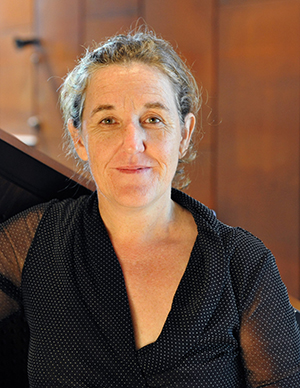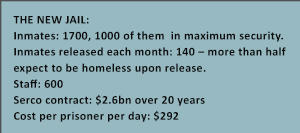
Justice Reinvestment reduces crime and costs
Justice Reinvestment (JR) is a strategy for reducing the number of people in prison by investing funds drawn from the State’s Corrections budget into communities that produce large numbers of prisoners. JR suggests that money can be more productively spent through diversion of a portion of government funds earmarked for spending on prisons back into communities with high rates of offending and incarceration.
This represents a shift in spending, not an increase.
There were 13,475 people in NSW jails in March 2019, about 13% more than five years ago. Almost 30% of them are Indigenous. It is clear that the community would rather see money invested in diversion and prevention.
JR is a framework for action and argues that it makes little economic sense to continue to spend vast amounts of government money on prisons as a primary response to crime, other than in the case of more serious or dangerous offenders.
According to JR, imprisonment doesn’t generally enhance the safety and wellbeing of communities, leading instead to increased rates of imprisonment. High rates of Indigenous incarceration occur at an inter-generational level within Indigenous communities and this cycle feeds the very same social problems which cause offending in the first place such as family and community fragmentation.
- Details
- Written by: Janet Grist

NCPHN considers impacts of the new Clarence jail
The soon-to-open Clarence Correctional Centre near Grafton is slated to be ready to accept prisoners by July 2020, however the preparedness of the system to accommodate inmates needs to be matched by the provision of essential community resources such as housing, and a proper assessment of the impact on local (and regional) health services beyond the prison walls.
As has been discovered elsewhere, this is a very complex social and public health issue. When it comes to health if there is one stand out issue of concern it is the interface between NSW Health, the funder of hospitals and justice and community health, and the federally funded Medicare system.
Adding to the complexity is that in NSW there are both State and privately run prisons. However the NSW Justice Health and Forensic Mental Health Network that manage prisoner health also have a monitoring role within private jails, including medical records being handled by their software and stored on their data base.
- Details
- Written by: Andrew Binns

The GP guide to dementia care
Background
Australia’s ageing population - largely due, of course, to modern medicine keeping us alive longer - is resulting in an increase in the prevalence of dementia,1 this increasing with age, from about 3.4% at 70-74 years to 20% at 85-89 years, and 40% at 95 years or over.
As the population ages, the number of people with dementia is estimated to rise from 200,000 (1% of current Australians) in 2005, to 730 000 (2.8% of the projected population) by 2050. Aboriginal and Torres Strait Islander people experience dementia at an earlier age, and at a rate 3 to 5 times higher than the general Australian population.2
Most people with dementia (84%) first report symptoms to their GP, but a delay between the appearance of dementia symptoms and a confirmed diagnosis is common, with one-half of those having early dementia not being diagnosed when presenting to primary care. 3
While the morbidity rates are concerning the incidence of mortality is especially so, with dementia currently being the leading cause of death for Australian women and the second leading cause of death overall. 5
- Details
- Written by: Dr Hilton Koppe

Australian Health eCommunication - a short primer
Muḥammad ibn Mūsā al-Khwārizm (محمد بن موسی خوارزمی) was a mathematician and head of the library of the House of Wisdom in Baghdad in 820 CE. His book on calculations gave us the word algebra and his name lives on in the term algorithm.
An algorithm, as defined in Wikipedia, is a “finite sequence of well-defined, computer-implementable instructions, typically to solve a class of problems or to perform a computation. Algorithms are always unambiguous and are used as specifications for performing calculations, data processing, automated reasoning, and other tasks”.
The RSA (Rivest–Shamir–Adleman) algorithm is used for encrypting and decrypting messages. A user creates two paired keys, a public key that is widely disseminated to those with whom you may want to communicate securely and a private key, which unsurprisingly you keep to yourself. In simple terms the way it works is that one of the keys locks the message and only the other can unlock it. Its practical use is to allow the sending and receiving of secure, authenticated messages.
- Details
- Written by: David Guest
Read more: Australian Health eCommunication - a short primer

Hospital Happenings
On 3 February 2020, the Clinical Year commenced! New interns arrived and we said farewell to many of our previous cohort. This year we have 12 new intern Rural Preferential Recruits (RPR) commencing at the Base to join the current 12 resident RPRs.
There will still be two rotating junior doctors from Prince of Wales as interns and residents (four in total) but our homegrown talent is certainly increasing. This year four of the interns had been students with us and liked us enough to return: generally our reputation as a centre is strong, attracting the other new RPRs. Lastly our retention from residency to PGY (postgraduate year) 3 was also very strong, with our managing to retain the majority of our previous RPRs compared to the state average of less than 20%
The year will see the second tower at Lismore Base Hospital opening, with many wards planned for decanting across in the next few months including the ICU. Exciting days ahead.
- Details
- Written by: Dr Louise Imlay-Gillespie, haematologist, LBH
Page 61 of 177















